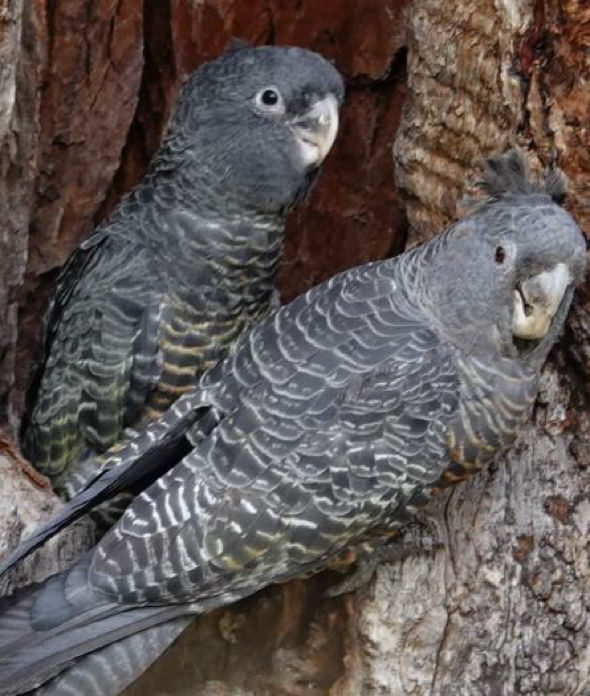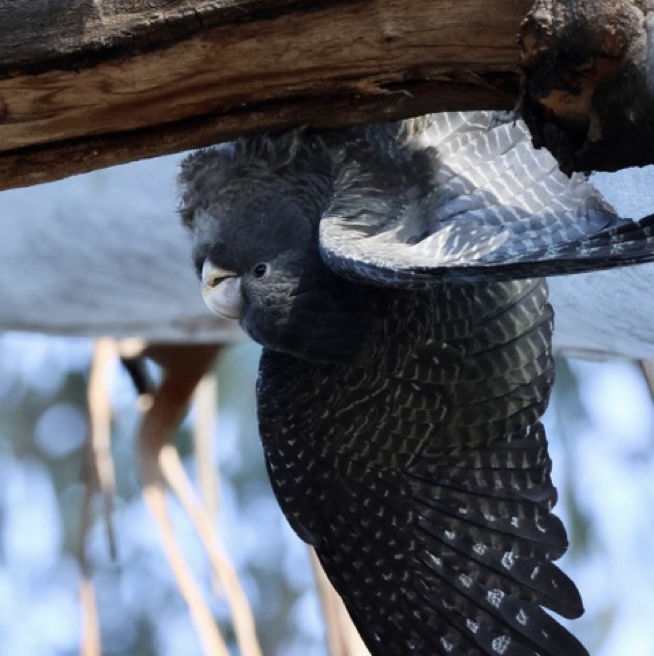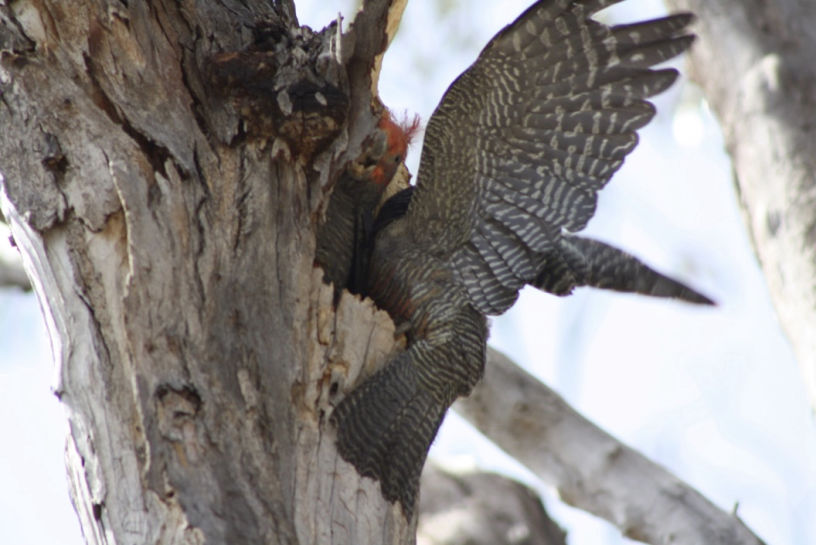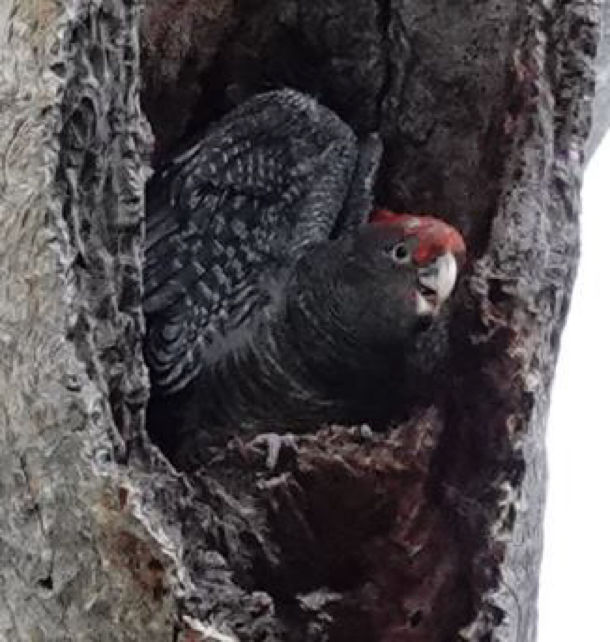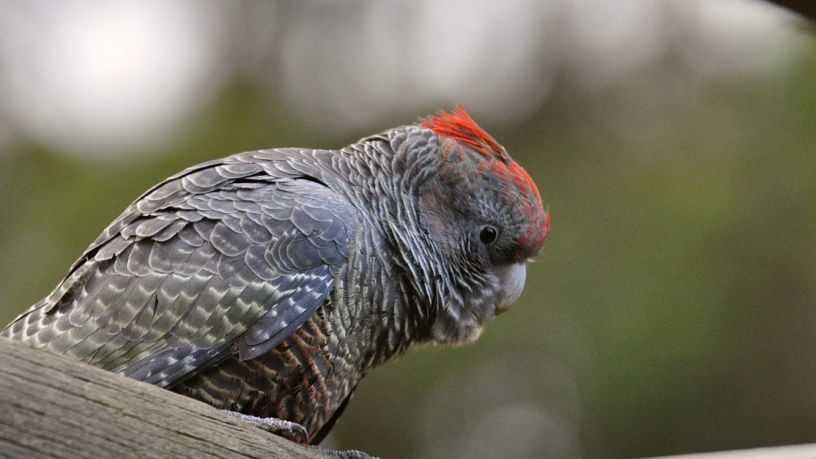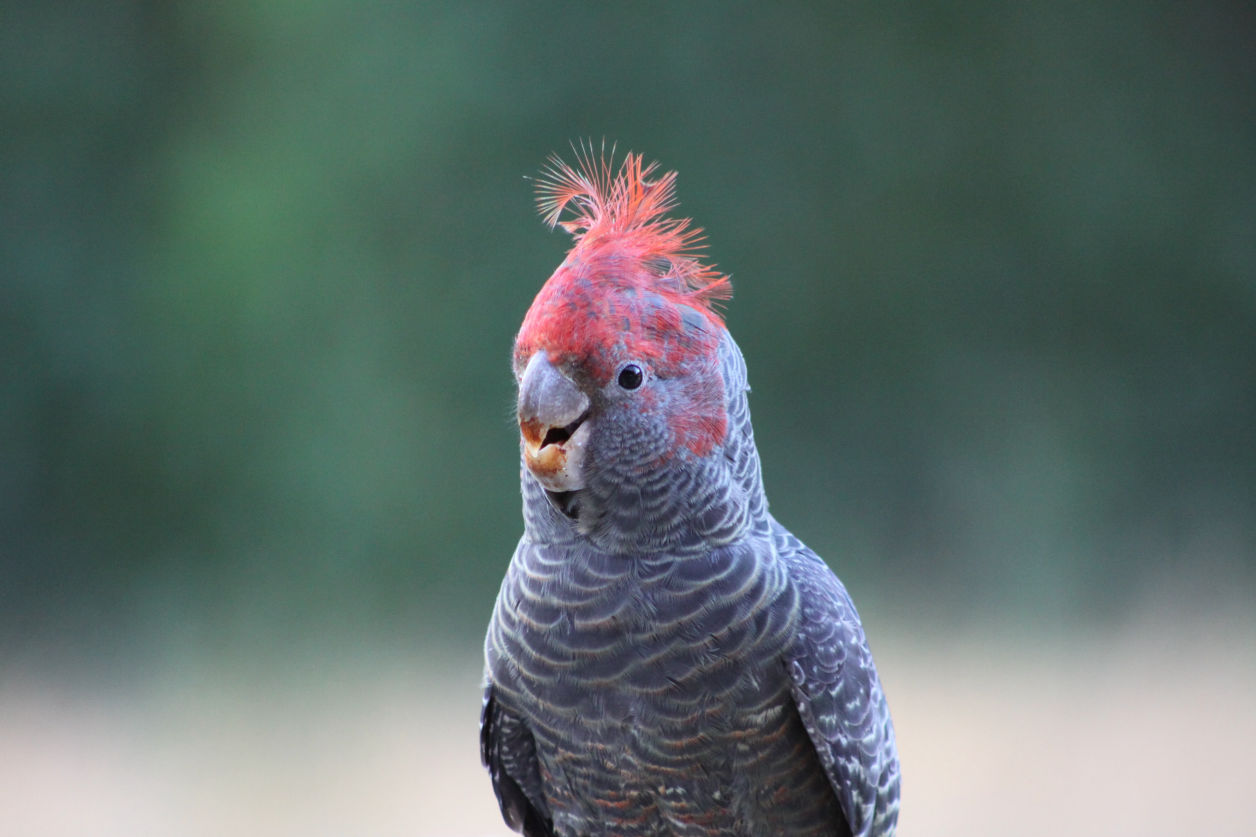
Fledgling or juvenile? Male head colouring varies and makes age determination difficult.
Gang-gang Fledging Identification Guide
There are beak and feet features that can distinguish chicks that have fledged within the last few days, say up to 3-5 days after fledging. While there are feather differences that can identify young birds from adults. Although we don’t know how far a fledging may travel in its first 5 days, we have observed that for at least some families they tend to stay within a few hundred metres of the nest hollow. So observing all or most of the below features is probably an indication that a breeding event has occurred nearby.
